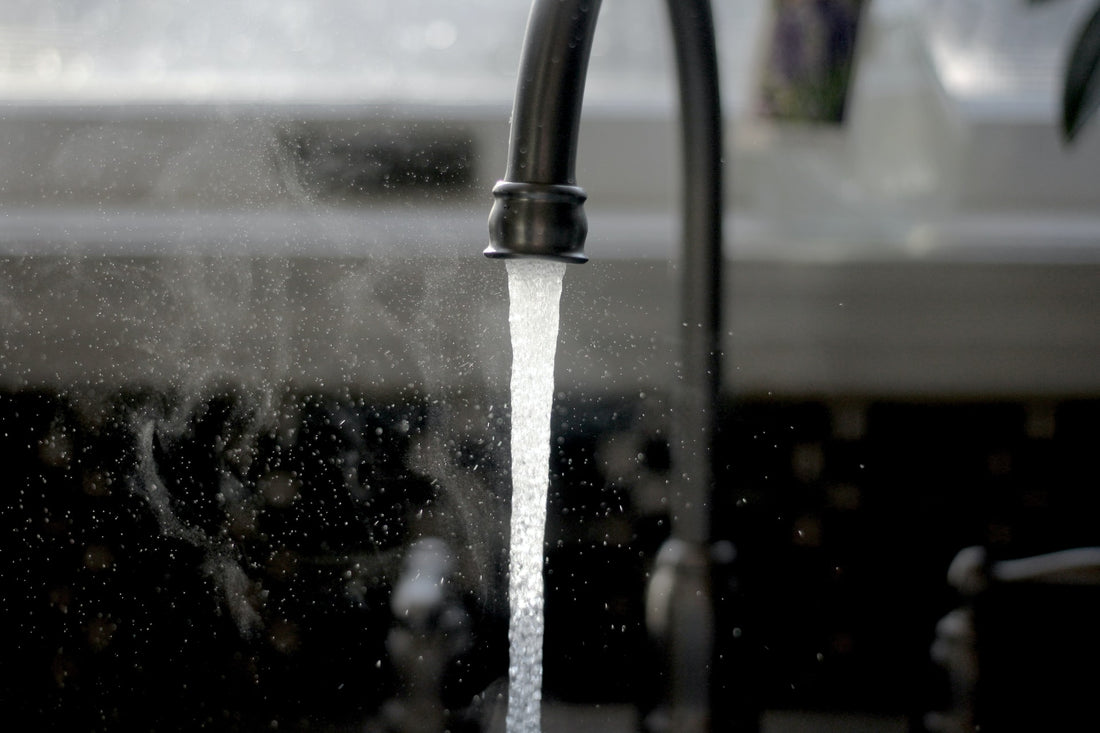Since the Flint water crisis in 2014, the levels of contaminants in water have been under more scrutiny.
What’s more, recent studies have revealed that every day, millions of American households are exposed to unsafe tap water containing high levels of harmful total dissolved solids (TDS).
While testing for some specific contaminants can require you to send water samples to a private certified lab, there are also some easy and inexpensive solutions to test your drinking water for the most common unwanted matters contained in high TDS water such as lead or nitrates.
However, not all TDS are created equal and not all pose a health threat.
So, if you’re looking to better understand the effects of high TDS water on your health, read on as we’ll explain what TDS is, and outline which specific TDS can be harmful to your health. We’ll also tell you how to remove harmful contaminants from your tap water for safe water consumption.
What are Total Dissolved Solids?
The term total dissolved solids (or TDS) refers to the total concentration of inorganic salts and organic matters present in your water. Some of the most common inorganic salts (or minerals) found in water include calcium, potassium, magnesium, nitrates, sulfates, and chlorides. The concentration of TDS in water is measured using the unit; milligrams per liter (mg/L) or parts per million (ppm). The EPA’s maximum recommended amount for tap water is 500 ppm.
The TDS levels in your water can affect its taste and texture. For instance, high TDS levels often give water a bitter or salty taste. High levels of certain TDS such as lead or arsenic can also have negative health effects. What’s more, drinking water with high concentrations of calcium and magnesium (also called hard water) can damage your hair, skin, and appliances.
How do Total Dissolved Solids End Up in Your Tap Water?
The organic and inorganic matters found in TDS water can come from both natural sources and human-related activities.
For instance, when water comes from a natural spring and flows underground, it can absorb a number of minerals including calcium, potassium, and magnesium from the rocks.
Human-related activities can also explain high levels of TDS in your water. Pesticides and herbicides from agricultural activity, lead from old water pipes, chlorine from water treatment plants, or salt used to de-ice roads in winter can all end up in your drinking water.
Are TDS Harmful for You?
A high level of TDS doesn’t necessarily mean your tap water is harmful to your health.
However, extremely high levels of specific elements (toxic ions) included in TDS measurements such as aluminum, chromium, lead, copper, or nitrate can lead to severe disease and health issues. Conversely, low levels of TDS can lead to the loss of minerals from body tissues.
While the EPA recommends a maximum TDS level of 500 ppm, any number above 100 ppm is usually considered high. High TDS levels can be due to high levels of potassium, calcium, or magnesium which don’t pose a health hazard. However, they can also be due to elevated levels of toxic elements such as copper, nitrates, lead, or arsenic which have been linked to many health issues. That’s why it is important for you to not only check the levels of TDS in your drinking water but also test for specific toxic ions as they can significantly impact your health.
Some of the most common toxic TDS-related health issues include:
- Cancer of the bladder, lungs, skin, kidneys, liver, and prostate.
- Cardiovascular issues.
- Immunological, pulmonary, and neurological problems.
- Reproductive issues.
How to Remove TDS from Your Drinking Water?
- Water Pitchers
Water filter pitchers are a great way to remove bad taste, odor, and certain contaminants from your drinking water. Because they’re not hooked up to your plumbing system, they’re inexpensive and very easy to use. All you need to do is fill the pitcher with tap water and wait for it to flow through the filtration media (usually granular media) before consuming.
However, note that while pitchers can remove some contaminants such as chlorine, most of them won’t be able to remove harmful chemicals such as:
- Viruses
- Bacteria
- Arsenic
- Fluoride
- Lead
- PFAs
- Faucet Mount Filters
Faucet mount filters can be clipped onto the end of your faucet. They feature a filtration canister, such as a carbon block to trap contaminants like chlorine. The idea is to hook your faucet mount filter to the end of the faucet and use the switch to decide whether your water should be filtered or not. While efficient at removing contaminants such as chlorine, they’re not always the best at eliminating toxic industrial substances or viruses.
- Reverse Osmosis Water Filters
Reverse osmosis water filters are the most efficient way to remove contaminants including TDS from your drinking water. External pressure is applied to contaminated water, forcing it through a membrane that can trap up to 99% of contaminants including heavy metals, viruses, fungus, bacteria, and toxic industrial chemicals. The purified water is then stored in a tank for you to consume. The difference with the two other options mentioned above is that RO systems are designed to both filter and purify your water whereas faucet mount filters and water pitchers will only filter it.
At Filtersmart, we specialize in manufacturing high-quality filters including reverse osmosis and whole house water filters to help our clients get access to healthy tap water. So, don’t hesitate to browse our range and get your filter today for safe drinking water. Our filters can remove up to 99% of harmful contaminants.
And, if you want to learn more about the best water filtration systems available on the market, you’ll find a list in our ‘’Five best drinking water filtration systems for high-quality tap water’’.






